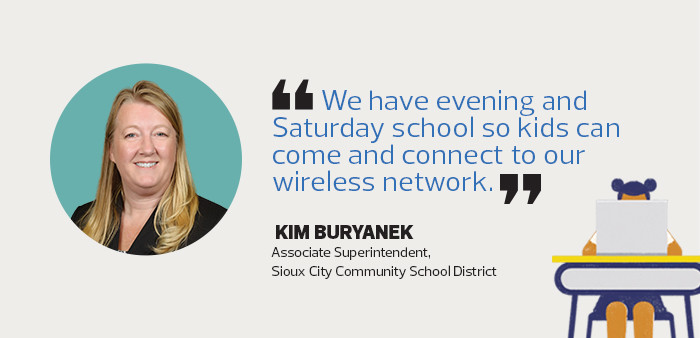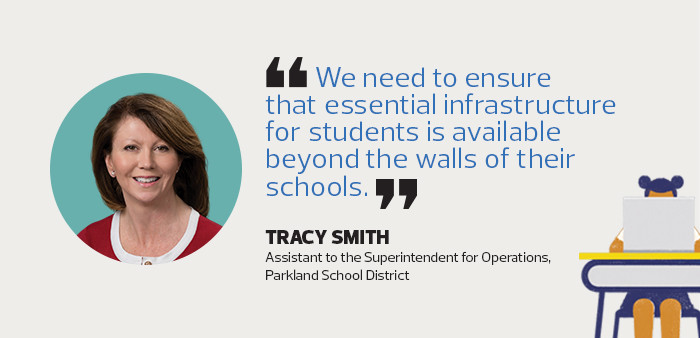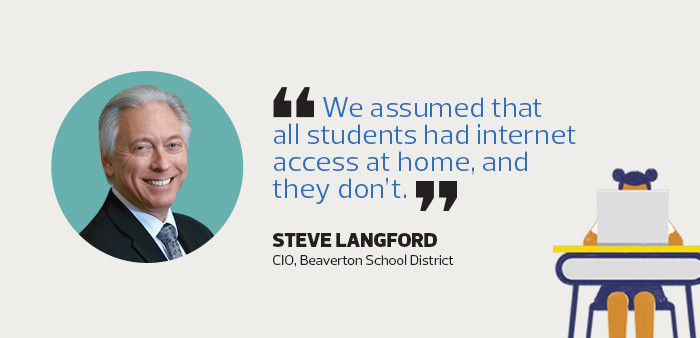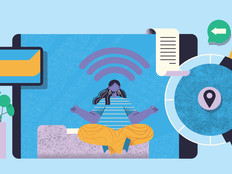The next step was getting hotspots. At that time, Sprint launched The 1Million Project Foundation, trying to get hotspots to students who need connectivity. We applied and received hotspots starting in 2017. Sprint provides us with about 375 devices a year.
That was great for our high schools, but we didn’t have support for middle school students. Fortunately, we found another partner through the Kajeet Homework Gap Grant. We have to purchase hotspots, but Kajeet gives us an aggressive discount. With Kajeet, we have about 150 for our middle schools.
Smith: For us, the fix is a combination of purchasing Kajeet hotspots and working with EveryoneOn, a nonprofit that partners with service providers to offer low-cost internet for qualifying parents. We also work with our community library to make sure they are a resource.
We have about 75 Kajeet hotspots, and they’re a great solution. Students can have them for about two weeks. If students need something longer term, EveryoneOn is a solution.
If that’s not affordable, we work with students, and in some cases we will extend their use of the Kajeet hotspots.
MORE FROM EDTECH: See how a Wi-Fi enabled backpack may help close the digital equity gap.
EDTECH: What’s next on your digital-equity roadmap?
Smith: We broke down digital equity into four areas: devices, infrastructure, broadband and skills. We’ve tried to bridge the divide in the skills base of our staff. We added tech mentors in each school building prior to the one-to-one rollout.
We are fortunate that only 3 percent of the families in our district don’t have home internet, but in some nearby communities that’s true for 20 to 30 percent of families.
I believe we are at a crossroads in our area where we can either watch the digital-equity gap get wider or we can join regional efforts to try to close it completely by getting fiber to the home, like in Chattanooga, Tenn.
We are part of a regional consortium focused on equity, and digital equity is a big part of our discussions about preparing for 5G.
Langford: Our digital-equity group is having other equity discussions and asking, are there differences by school in how teachers are using technology or not using it? What kind of professional development do we need to put in place to make sure students are getting a consistent educational experience?
For example, you can’t go to college now without using a learning management system. In college, you do everything through a portal. We have some schools that are all in: 100 percent of teachers are using the LMS.
But, say most teachers in another high school are not using it; then we’re not preparing all the students in that high school for the college experience. That relates to teacher practice, training, comfort level and support as they use these tools.













